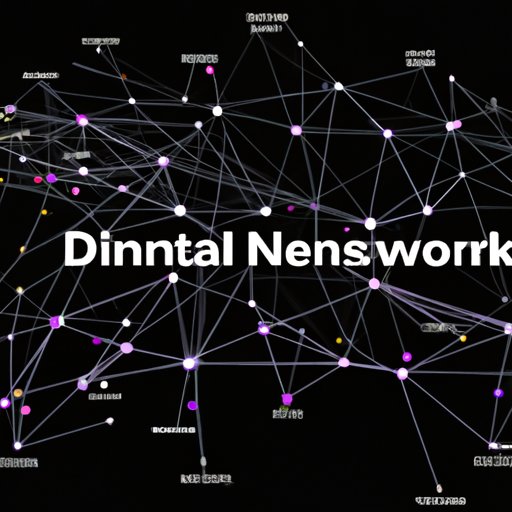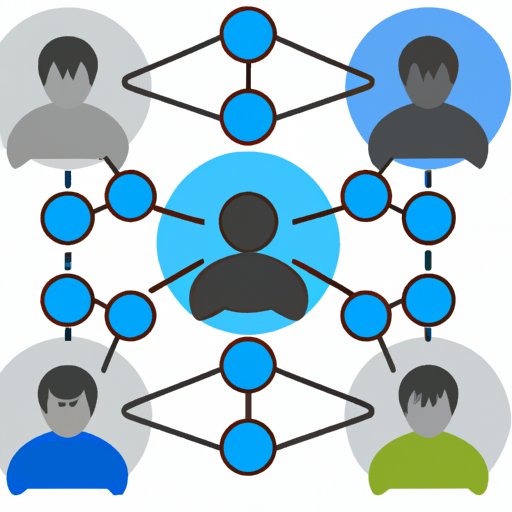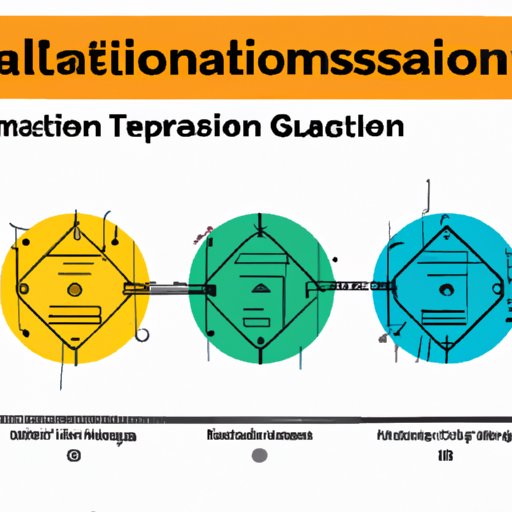Introduction
Data science is a rapidly growing field that is transforming the way businesses and organizations operate. According to a recent study conducted by IBM, the demand for data scientists has increased by 28% over the past five years and is expected to continue to rise in the coming years. With such a high demand for data scientists, transitioning into this field can be an incredibly rewarding career move.
This article aims to provide a comprehensive guide to transitioning into data science. We’ll discuss topics such as identifying your skillset and strengths, taking online courses or certificate programs, networking within the data science community, internships and apprenticeships, learning the basics of programming and statistics, and finding a mentor or joining a data science group.

Identify Your Skillset and Strengths
The first step in transitioning into data science is to assess your current knowledge and abilities. This will help you determine which areas you need to focus on in order to become a data scientist. To do this, take a look at job descriptions for data scientist positions and analyze the requirements for each position. This will give you an idea of what skills and qualifications employers are looking for in data scientists.
In addition to looking at job descriptions, you can also utilize online resources to determine areas where you might need to improve. For example, websites like Dataquest, Udacity, and Coursera offer courses and tutorials on data science topics such as machine learning, data visualization, and natural language processing. These courses can help you gain a better understanding of the field and identify areas where you may want to focus your efforts.
Take Online Courses or Certificate Programs
Once you’ve identified the areas where you need to improve, it’s time to start taking courses or certificate programs to develop your data science skills. There are many different types of online courses available, ranging from free courses to paid courses. It’s important to research the different options and choose the course that best fits your needs and budget.
In addition to online courses, there are also certificate programs available for those who want to pursue a more formal education in data science. These programs typically involve a series of courses and exams, culminating in a certificate of completion. Researching these programs can help you decide if they are the right fit for you.

Network Within the Data Science Community
Networking is an essential part of transitioning into data science. Joining professional organizations, attending conferences, and participating in discussion forums are all excellent ways to build relationships with other data scientists and stay up-to-date on industry trends. Additionally, following industry leaders on social media can help you stay informed about new developments in the field.
Internships and Apprenticeships
Internships and apprenticeships are a great way to gain hands-on experience in data science. Companies often offer internships and apprenticeships that provide the opportunity to work alongside experienced data scientists and learn from them directly. Additionally, universities may have career services departments that can help connect you with potential employers.
Learn the Basics of Programming and Statistics
Understanding the basics of programming and statistics is essential for those looking to transition into data science. When it comes to programming, it’s important to choose a language that is widely used in data science. Popular languages include Python, R, and SQL. Additionally, having a basic understanding of statistical concepts such as probability, distributions, and hypothesis testing is important.

Find a Mentor or Join a Data Science Group
Finding a mentor or joining a data science group can be incredibly beneficial when transitioning into data science. Leveraging your professional networks to find a mentor is a great way to get guidance and advice from someone who is already established in the field. Additionally, joining a local data science group can help you meet other data scientists and get involved in the community.
Conclusion
Transitioning into data science can be a daunting process, but with the right steps and resources, it is possible to make the transition successfully. To recap, the steps to follow include identifying your skillset and strengths, taking online courses or certificate programs, networking within the data science community, internships and apprenticeships, learning the basics of programming and statistics, and finding a mentor or joining a data science group.
With dedication and hard work, transitioning into data science can open up a world of opportunities. By taking the time to assess your skillset and strengths, researching courses and certificate programs, networking, and finding mentors, you can make the transition into data science and begin your journey towards a successful career.
(Note: Is this article not meeting your expectations? Do you have knowledge or insights to share? Unlock new opportunities and expand your reach by joining our authors team. Click Registration to join us and share your expertise with our readers.)
